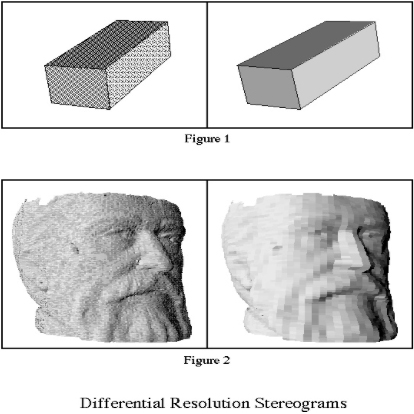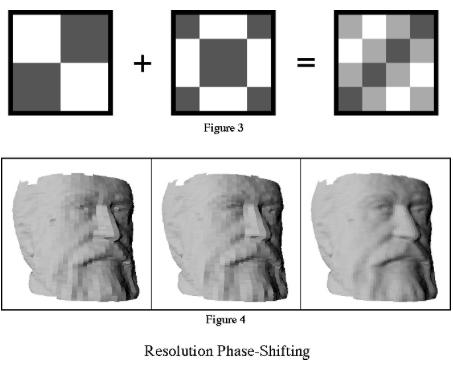|
|
 |

|
 |
 |
| Perceptually Tuned Visual Simulation (Mary K. Kaiser, Dennis R. Proffitt, Randy Pausch) |
 |
Problem
Human factors engineering is required to improve the quality of visual displays in aerospace systems. Advanced computer generated imagery (CGI) systems are used to create compelling visual displays for navigation/control systems, vehicle/system simulation, telerobotics, and scientific visualization applications. The quality of these displays can impact the safety and productivity of flight and ground-based operations. Inevitably, the realism of these displays is constrained by limitations in CGI hardware and software, especially if images need to be generated in real-time. Despite rapid advances in image generation technology, human operators wanted more realistic, higher-fidelity displays; it is likely that this demand for improved fidelity will continue for the foreseeable future.
Approach
Perceptual psychologists currently know a great deal (and are learning more) about the capabilities and limitations of the human visual system. Limits of spatial and temporal resolution, mechanisms of stereopsis, and attentional focus are examples of how human vision filters input. To date, graphic rendering systems have not fully exploited this knowledge. To this end, we have proposed that a number of rendering techniques based on perceptual models could enhance graphical system performance with no perceptible loss of image quality.
We conducted research examining techniques aimed at reducing the computational cost required to achieve a desired level of image quality and frame rate. These techniques exploited principles of visual processing to reduce computational load. This multi-disciplinary research involved a collaboration among research scientists at the NASA Ames Research Center, professors in Computer Science and Psychology/Biomedical Engineering at the University of Virginia, and designers and engineers at industry sites.
Accomplishments
To date, we have performed a systematic evaluation of the efficacy of a commonly used database simplification technique known as billboarding. Our findings are reported in the Journal of Experimental Psychology: Applied. We have also evaluated various techniques for level-of-detail modulation, developing novel techniques which appear significantly more natural than those commonly used. Finally (and most significantly), we have developed a set of techniques for rendering images with higher apparent resolution. NASA has applied for a patent for this process (NASA Case: ARC 12080-1). To use this process to create stereo displays, images of different resolution are shown to the two eyes (Figure 1 shows varying texture complexity; Figure 2 shows varying polygonal complexity). The resulting fused image appears to possess the higher resolution detail. Figures 3 and 4 illustrate the process for a non-stereo image. Here, two low- resolution images are phase-shifted and superimposed to create an image of higher apparent resolution than can be achieved with the sum of the polygons rendered in the component images.

Figure 1. Varying texture complexity (Differential Resolution Stereograms)
Figure 2. Varying polygonal complexity (Differential Resolution Stereograms)

Figure 3 & 4. The process for a non-stereo image (Resolution Phase Shifting)
Future Plans
Most of the efforts at the time focused on further evaluation of algorithms, the extension of techniques to larger object classes, and the development of generalizable tools suitable for inclusion in a graphics modeling toolbox. We interacted with hardware and software developers to maximize the utility of our techniques and ensure compatibility with hardware architecture.
It was also anticipated that the development of a number of rendering techniques would significantly enhance the performance of graphics systems. Our goal through this research was to both extend the upper range of graphical rendering performance and to enable lower-end systems to produce visual imagery that could only be produced with high-end systems. |
|
|
|
|